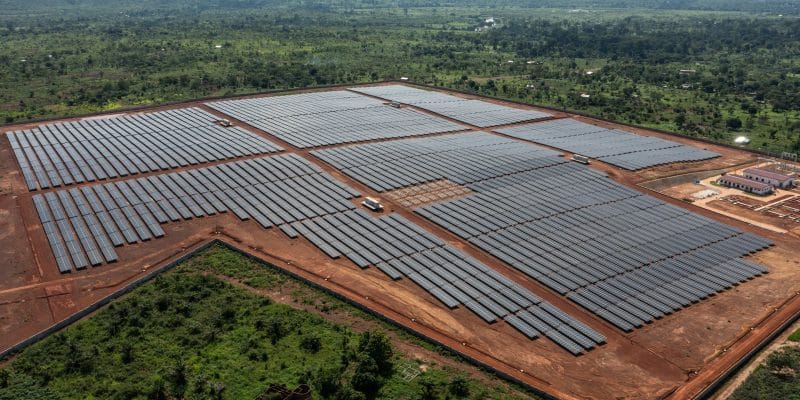On 17 November 2023, the Central African government inaugurated the Danzi solar power plant. Built thanks to a loan from the World Bank, the country's second solar photovoltaic power station has a capacity of 25 MWp.
The Central African Republic (CAR) has a new photovoltaic solar power plant. The facility, inaugurated by President Faustin Archange Touadera on 17 November 2023, covers a 70-hectare site in the village of Danzi, 20 km north of Bangui, the capital of CAR. The plant consists of 47,000 solar panels installed by the Chinese company Shanxi Construction Investissement Group, in the commune of Bégoua.
https://twitter.com/Banquemondiale/status/1727235469686304795
According to the President of the Central African Republic, “the recurring electricity problems can be partly explained by the lack of investment over the past 40 years in this sector, which is so vital to the national economy. The construction of the Danzi photovoltaic power station reflects the Central African government’s desire to diversify sources of electricity production, with the emphasis on developing hydroelectric, solar and biomass potential”.
Financing from the World Bank
The Danzi solar power plant, which is connected to a 30 MWh electricity storage system, was built as part of the Emergency Project for Access to Electricity (Puracell), funded to the tune of 37 billion CFA francs (just over €56 million) by the World Bank. Of the funds released in June 2019, 19 billion CFA francs (€28.9 million) financed the construction of the Danzi solar power plant and its storage system.
Read also- CAR: near Bangui, the Sakaï solar power plant (15 MW) comes on stream
The electricity produced is fed into the grid of the state-owned company Energie Centrafricaine (ENERCA) via the existing 63 kV transmission line linking the Boali hydroelectric system to the capital Bangui. The Puracell project, which is enabling this breakthrough, is being implemented by the Central African government with the aim of improving the supply of and access to electricity in the capital Bangui, home to a quarter of the country’s population (just over one million inhabitants), with an electrification rate of 35% and an installed production capacity of 28 MW compared with unmet demand estimated at around 60 MW.
Puracell is also focusing on improving the transmission and distribution (T&D) network in order to absorb the additional production capacity, in particular with the commissioning in April 2023 of the Sakaï 15 MWp solar power plant, as well as the Danzi plant. The aim is to reduce T&D losses, while improving access by extending the distribution network and new connections across Bangui.
Jean Marie Takouleu






